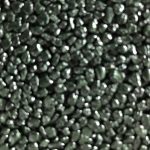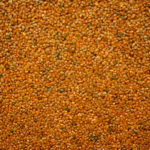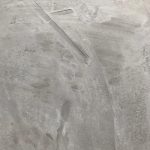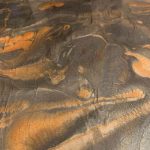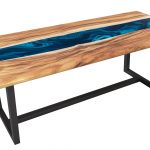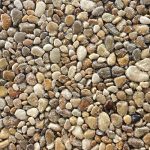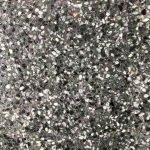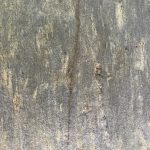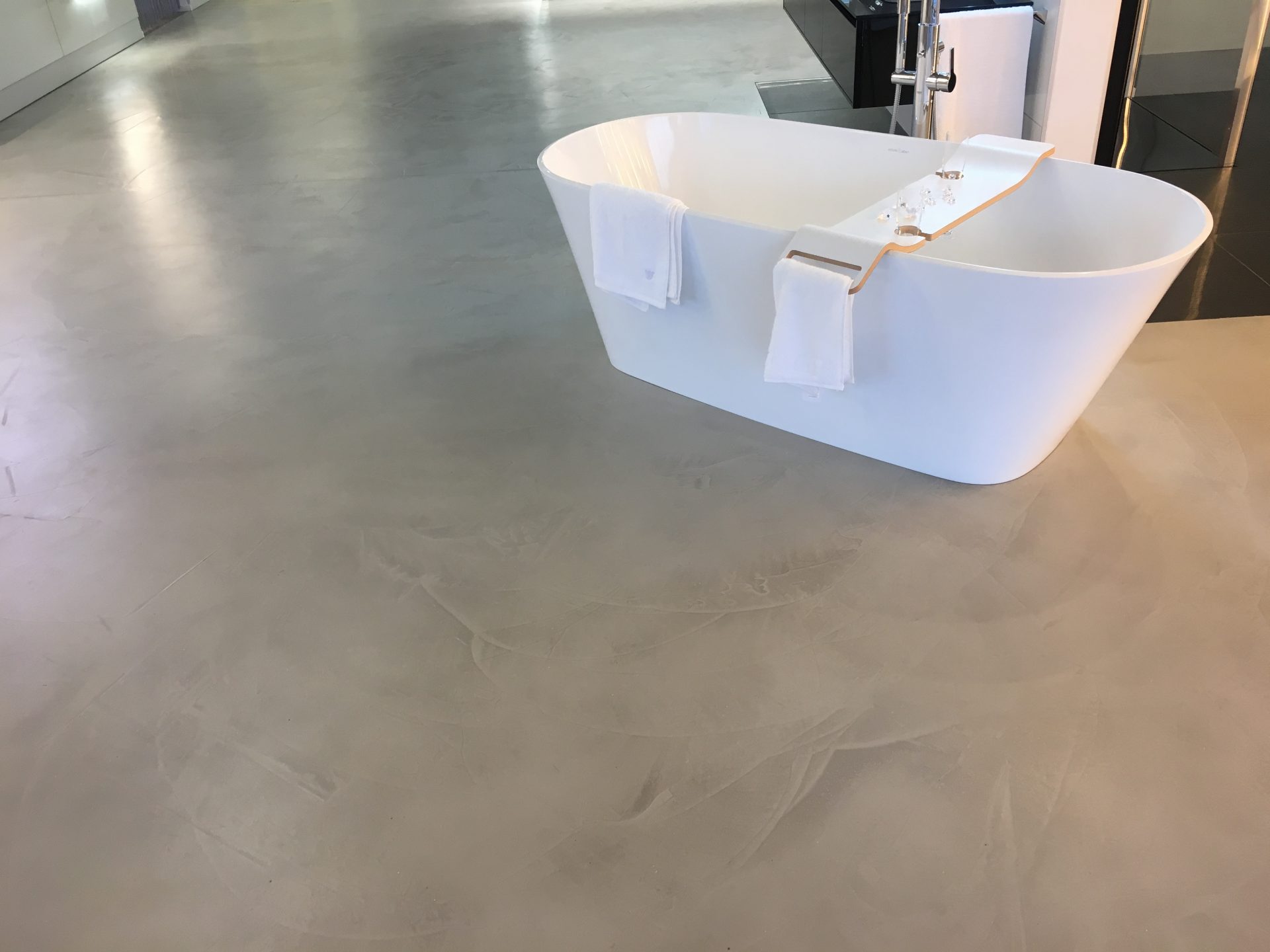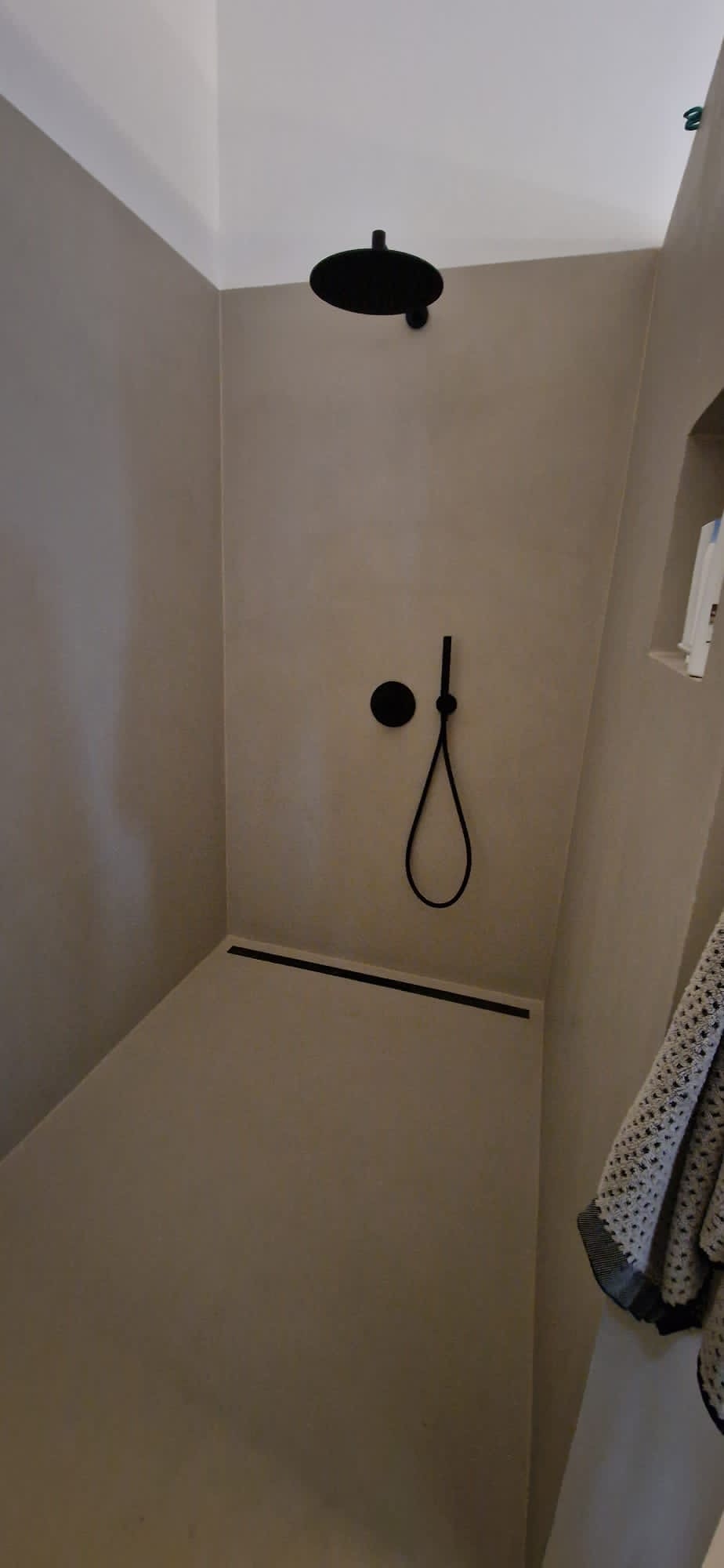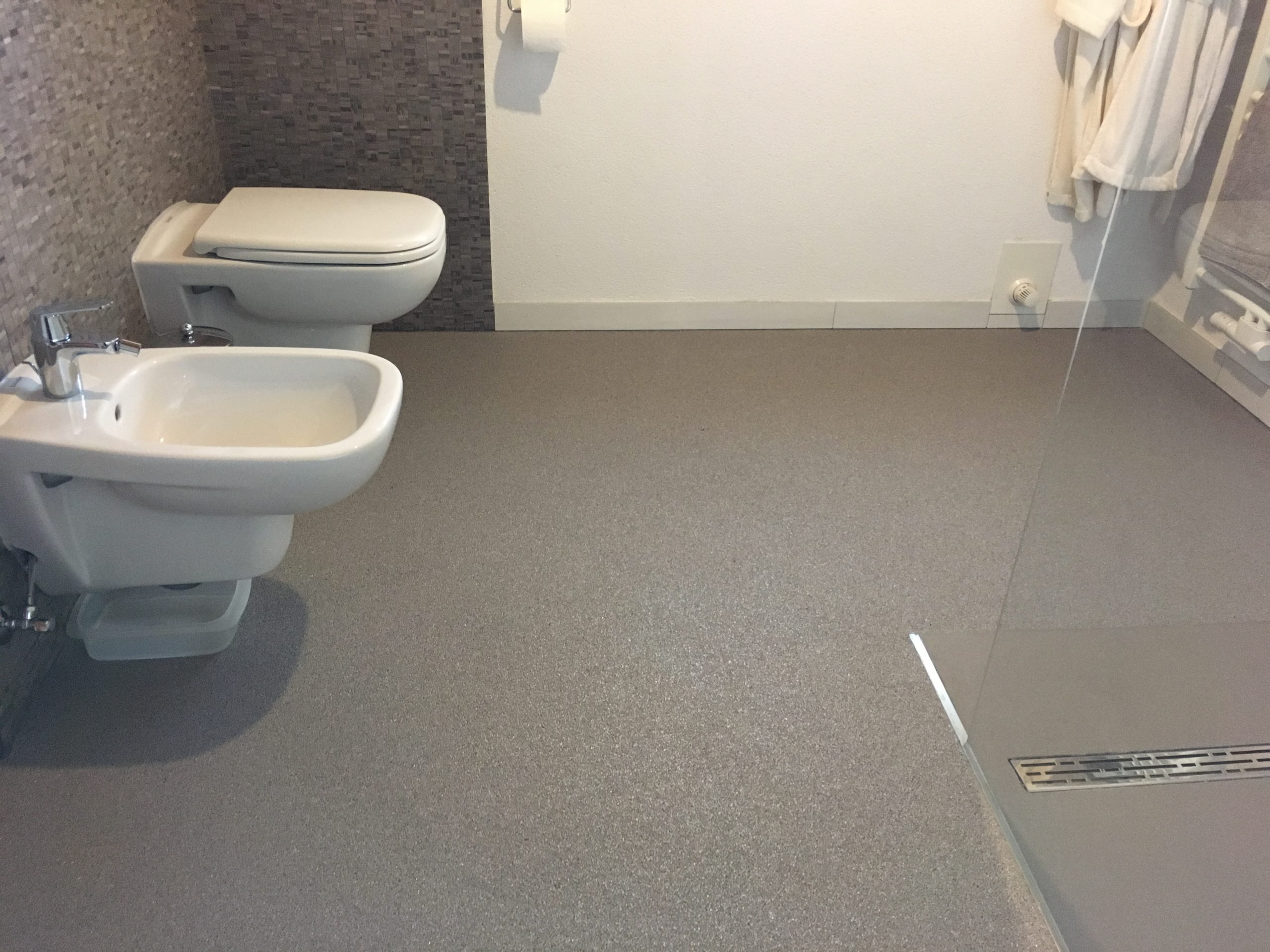The fact is that our four-legged friends bring dirt from outside into the parlour. When it’s raining, they paw through the flat with wet paws and lose hair. In the interesting facts section, we report on how a stone carpet makes dogs and masters happy in equal measure.
A stone carpet is scratch-resistant and slip-resistant
Anti-allergenic and sound-absorbing - living with gravel floors
Made from quartz or marble pebbles, gravel floors are very hard-wearing as they are scratch-resistant and their coarse surface structure also makes them particularly slip-resistant. This is the reason why dogs love this excellent floor covering so much. Younger dogs who like to play don’t slip on this flooring, which is easy on their joints. Older dogs have more grip on this surface, which makes it easier for them to stand up.
While you always have to make compromises with conventional floor coverings, the stone carpet with all its advantages outweighs them.
Carpet vs. stone carpet
A carpet is just as sound-absorbent as a stone carpet. But while a gravel floor is very easy to clean thanks to its seamless installation – by vacuuming and simply wet mopping – a carpet is very high-maintenance. It is very difficult to remove stubborn stains caused by dog faeces or dirty dog paws, for example. Long dog hair that gets caught in the carpet can also require vacuuming several times a day in the worst case.
Hygienic cleanliness can be a time-consuming challenge when children are crawling across the floor. A stone carpet, on the other hand, is hygienic, easy to clean and hypoallergenic.
Smooth floors vs. stone carpet
The main disadvantages of all smooth surfaces such as laminate, tiles, vinyl and parquet are their slipperiness and the fact that dog paws and hair are very noticeable on them. On a stone carpet, however, such soiling is not noticeable at all. Of course, this doesn’t mean that the dirt isn’t there, you just can’t see it directly. Visitors are not put off by fresh stains. This means you can make better use of the preparation time for other things, such as baking cakes, and postpone mopping the floor until later.
Another disadvantage of smooth floors is the strong transmission of noise, whereas seamless gravel floors absorb sound.
Parquet vs. stone carpet
Parquet is extremely sensitive. Dogs’ claws leave nasty scratches and urine causes the wood to swell and leave unsightly stains. Even if oiled and brushed parquet floors are somewhat more robust than lacquered surfaces, they are still very high-maintenance if dogs are part of the household. As stone carpets are inherently resistant to scratch marks and do not absorb liquids, these problems cannot occur.
Underfloor heating predestined for stone carpets Dogs love warm floors
Dogs like to lie on warm surfaces. A stone carpet is a warm surface by nature. As it consists of many small pebbles, the installation of this flooring creates lots of small air chambers in the structure of the pebble flooring. These allow the warm room air to reach the quartz gravel or marble gravel from all sides, which means that the gravel floor adapts to the room temperature much more quickly. This effect is further emphasised by the use of underfloor heating . As the thickness of the stone carpet is only 6 mm compared to a considerably thicker tile covering, it heats up much more quickly. This and the surface structure just mentioned allow the heat to be released into the room air more quickly.
These are by no means all the advantages that a stone carpet has to offer. Did you know, for example, that stone carpets can be used to cover dog kennels? For expert advice on the topic of “stone carpet in and around the home“, please contact us by phone or email at. Decide on the ideal floor for your home. For your well-being, for your four-legged friend and …
… for a strong appearance!
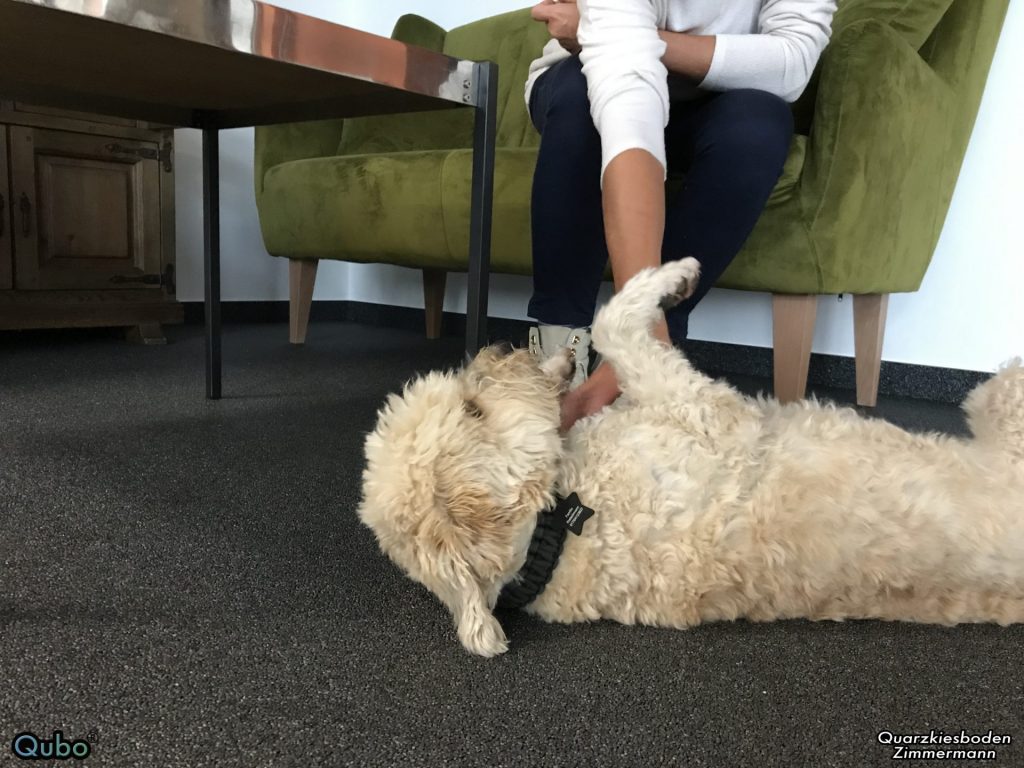
Non-binding cost estimate and advice
Link collection
- Stone carpet product page
- Retrofitting underfloor heating (Things to know)
- Kiesboden im Innenbereich (Wissenswertes)
- Contact to Quarzkiesboden Zimmermann
First and foremost, the area of application determines the pricing. However, the cost of a stone carpet depends on many different factors, including
- the type of binder required
-
from the primer
-
the choice of skirting boards, for example, if these are also made of gravel
-
from the labor costs of the professional installer
-
the size of the area to be laid
In outdoor areas, the costs are higher because the substrate needs to be sealed and the marble gravel needs to be laid with a UV-resistant binder.
First and foremost, the area of application determines the pricing. For example, you can have a stone carpet laid indoors for around €100 per m². However, the costs depend on many different factors, including
- the type of binder required
-
from the primer
-
the choice of skirting boards, for example if these are also made of quartz gravel
-
from the labor costs of the professional installer
-
the size of the area to be laid
In outdoor areas, the costs are higher because the substrate needs to be sealed and the marble gravel needs to be laid with a UV-resistant binder.
In most cases, coloured quartz or marble gravel is used for the production of stone carpets. However, there are considerable differences in quality here, for example in the proportion of dust in the material or in the types of marble used. Mica additives and various precious and semi-precious stones can be added, but this is another cost factor.
Colored quartz is available in the following grain sizes:
-
1–2 mm
-
2–3 mm
- 3–4 mm
Marble gravel is available in the following grain sizes:
-
1–4 mm
-
4–8 mm
- 8–15 mm
Of course, the choice of gravel grain size has an effect on the laying thickness of the gravel floor.
The laying thickness of the floor depends on the gravel grain size and the area of application. Normal gravel with a grain size of 2 – 3 mm can be laid indoors with a thickness of 6 mm.
An installation thickness of 8 mm is used outdoors and on stairs indoors due to the load.
Finally, 10 mm of material is applied to external stairs.
Vertical surfaces such as risers, skirting boards and walls are always laid in 6 mm.
The larger the grain size of the gravel, the higher the installation height of the floor covering. This means that more gravel and additional binder is required per m². The price increases accordingly.
The primer forms the bonding bridge between the building structure and the gravel floor. The material can be applied to almost any substrate, for example tiles, wood, stone, concrete and metal. Different substrates require different preparation steps.
On tiles and metal, for example, a primer is required to give the smooth surface stability during installation.
On porous stone and absorbent screed, the appropriate primer must be used to prevent the binder from being absorbed, which is intended to ensure that the pebbles remain in place.
To coat wooden planks with a gravel floor, the movement of the planks against each other must first be stopped. To do this, the installer first applies a mesh mat to the wooden floor. Once the filler has dried, the gravel floor is applied.
For reasons of hygiene, the stone carpet should be fitted with a pore seal, especially in kitchens and bathrooms. It prevents leaked, sticky liquids from penetrating the gravel floor. While it is difficult to remove liquids that have penetrated an open floor, the pore seal enables effortless cleaning by wet mopping.
Dogs, cats and co. feel much more comfortable on the textured surface of a gravel floor than on smooth floor coverings such as tiles or laminate, as they do not slip on stone carpets. However, it is advisable to cover the floor with a pore seal to ensure an easily wipeable surface.
-
High drainage capacity due to open-pored structure
-
Quick drying in sun and wind
-
Easy to clean and self-cleaning
-
100% frostsicher
-
UV-stabil
- Gentle, massage-like walking comfort when walking barefoot
The most important thing when laying gravel floors in outdoor areas is preparing the substrate. This ensures the durability of the finished floor.
On the one hand, this is because a primed subfloor provides significantly increased adhesion for the filled gravel. On the other hand, a sealing layer keeps rainwater away from the building structure, for example, which supports long-term durability.
Options for sealing building structures are
- Sealing using an epoxy resin seal with sealing membrane
- Sealing using a flex sealing slurry
In order to drain rainwater effectively, the floor covering is laid with a gradient of at least 1.5%.
No, in outdoor areas, the stone carpet is always laid as an open system to ensure drainage capacity and thus the drainage of rainwater. This makes them 100% frost-proof and therefore ideal as pool surrounds and as a covering for balconies, terraces, entrance areas, outdoor steps and loggias.
We would like to point out that we do not recommend stone carpets in the direct shower area. The reasons for this can be found in the basic structure of the floor and the wet room. Just as the tile adhesive under a tile does not form a completely flat surface without air pockets, pores also remain underneath a sealed stone carpet.
If, after years, a silicone seam leaks and water from a fitting, for example, penetrates between the wall or floor covering and the seal of the building structure, the transparent pore seal reacts with the water and forms white stains. As these occur underneath the seal, they cannot be wiped away or removed by drying.
This is why insurance companies do not classify stone carpets as suitable for wet rooms and do not replace such coatings in the event of damage. We therefore recommend microcement coatings for showers. With these, there is no water-bearing layer between the floor covering and the substrate, so there is no risk of moisture penetration. Due to the many customization options for microcement, it can also be combined with stone carpeting. Just get in touch with us.
Yes. A staircase coated with stone carpet already has a slip resistance class of R10 after installation.
Special sealants can be used to increase the slip resistance class to R11 or R12.
Depending on the design of the staircase, the renovation takes 3-5 days. In special cases, installation is also possible within an even shorter time. For a more precise determination of the duration of your construction project , simply contact us at.
All our gravel floors use natural stones as the base material. This is why many people also refer to stone carpeting as natural stone carpeting.
The gravel is available natural and colored.
FAQ
Details and facts, key figures and explanations – here you will find answers to frequently asked questions about our Qubo® coating systems. If any details remain unclear, simply contact us. We will be happy to advise you personally and promptly.

